#v&a illustration awards
Photo
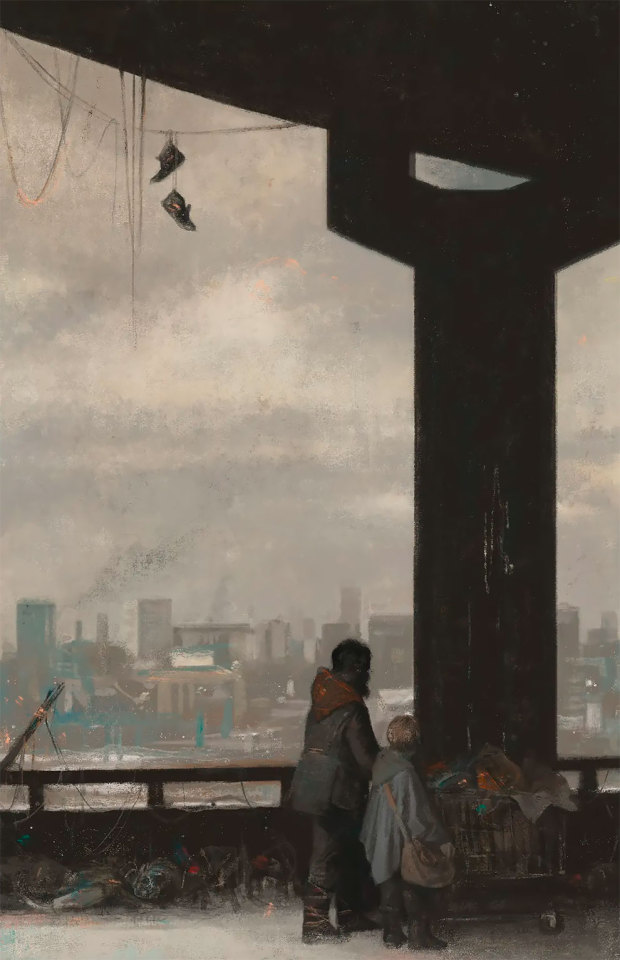
Gérard DuBois was commissioned to illustrate a new Folio Society edition of Cormac McCarthy’s The Road. His acrylic paintings, described by the judges as ‘masterpieces’, capture the beauty and brutality of McCarthy’s text.
V&A Illustration Awards
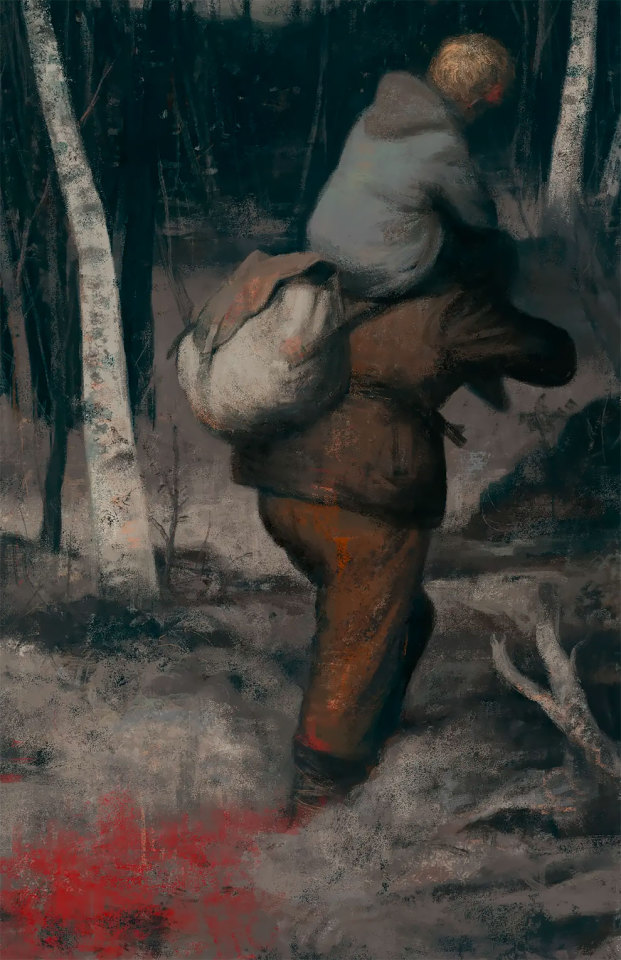
#gerard dubois#artist#art#illustrator#illustrations#folio edition edition of cormac mccarthy's the road#acrylic paintings#masterpieces#v&a illustration awards
6 notes
·
View notes
Text
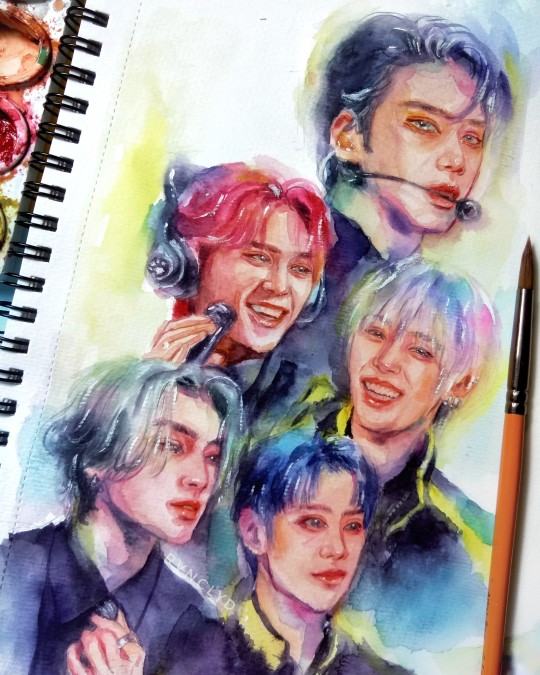
#wayv miracle unit @ indonesian tv awards <3#wayv#wayv fanart#wayv kun#wayv ten#wayv xiaojun#wayv hendery#wayv yangyang#weishenv#威神V#nct fanart#그림#팬아트#일러스트#kpop fanart#watercolor painting#illustration#watercolor illustration#sketchbook#watercolor sketchbook#kpop sketchbook#kpop artwork#kpop watercolor#kpop journal#qian kun#chittaphon leechaiyapornkul#xiao dejun#wong kunhang#liu yangyang#wayzenni
21 notes
·
View notes
Photo
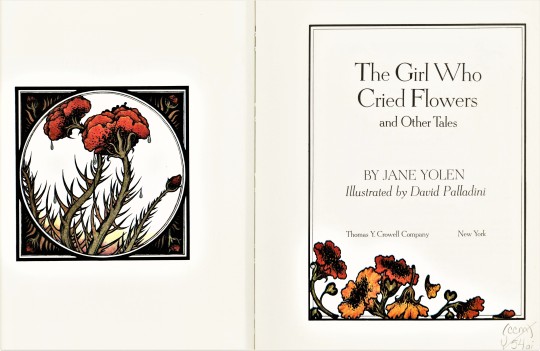
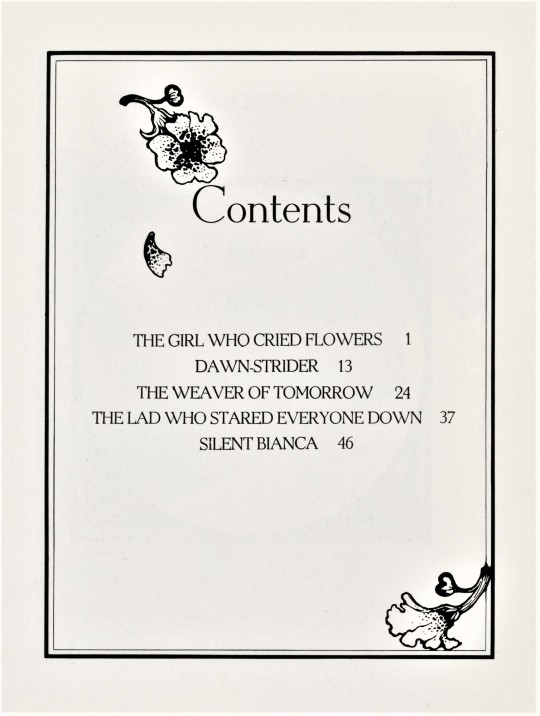
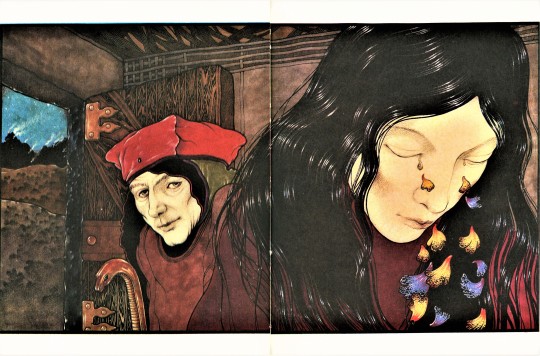
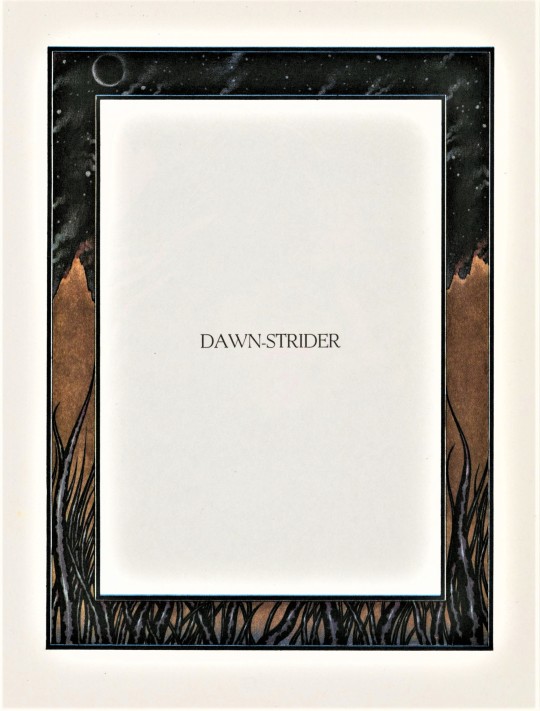
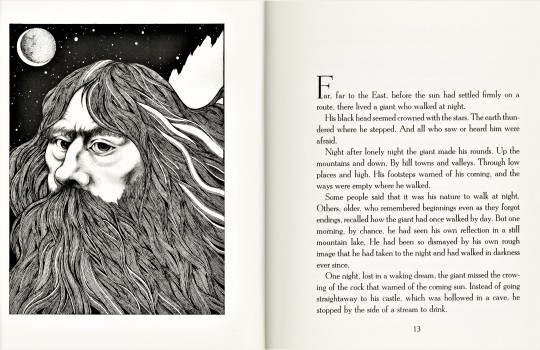
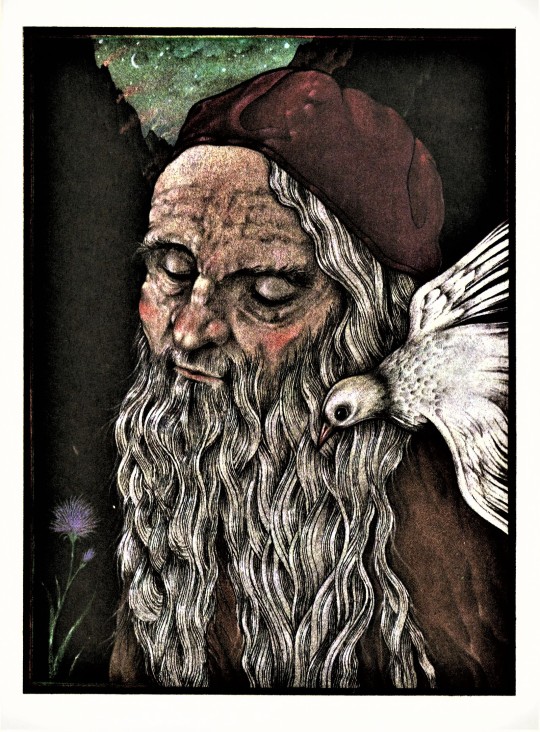
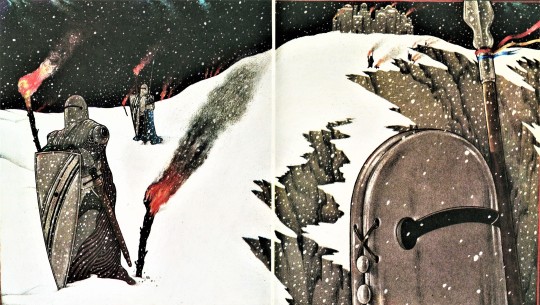
More Fairy Tales
This week I bring you The Girl Who Cried Flowers, and Other Tales, by the prolific American writer Jane Yolen (b.1939), illustrated by David Palladini (1946-2019), and published in New York by Thomas Y. Crowell in 1974. The book contains five original fairy tales with accompanying illustrations that range from one to two pages and are in both black and white and color. Tales such as these among her more than 300 titles has led Newsweek to dub Yolen “The Hans Christian Andersen of America.”
Yolen claims that it was this book, published nine years after her first book, that established her reputation in the field of children’s literature. The title story, The Girl Who Cried Flowers, has seen several iterations, including being separately published in Cricket magazine in 1990, published as an audiotape that Yolen narrated for Weston Woods Studios in their Readings to Remember series, and produced as an animated movie by Auryn Studios, with a script by Yolen, and directed by Bollywood director Umesh Shukla.
Yolen, who had originally worked as an editor, considered herself to be a poet and a journalist/nonfiction writer. Fate took her in a different direction, however, and to her surprise she became a children’s book writer who focused mostly on fantasy and science fiction. Her numerous awards andhonors include a Caldecott Medal, a Caldecott Honor, two Nebula awards, the Jewish Book Award, and six honorary doctorates.
Palladini, an Italian-born American illustrator, was best known for his Aquarian Tarot deck, which was published by Morgan Press in 1970 and reworked as the New Palladini Tarot in 1997 by U.S. Game Systems. Palladini’s style is reminiscent of the Art Nouveau illustrations of Alphonse Mucha and Aubrey Beardsley, a beautiful accompaniment to Jane Yolen’s stories.
View more posts from our Historical Curriculum Collection of children’s books.
View more Women’s History Month posts.
-- Elizabeth V., Special Collections Undergraduate Writing Intern
#women's history month#women writers#woman author of the week#Jane Yolen#David Pallandini#Thomas Y. Crowell Co.#The Girl Who Cried Flowers and Other Tales#fairy tales#children's books#illustrated books#Historical Curriculum Collection#Elizabeth V.
128 notes
·
View notes
Text
Identity V Nymph Award
Wu Chang Live2D Illustration
Seiyuu/Voice actor : Toshiyuki Toyonaga
Translation
- With whom would you most like to share the joy of winning the Nymph Award? I achieved this with my younger brother, but he is not here today due to business. The only person I want to tell the most about is him.
- I would like to thank you for your kindness, but I am afraid that I will only accept it from you.
- When the east wind stops blowing, memories hit the umbrella and melt into dreams.
- “One of the Nymph Award winners was unable to attend the award ceremony due to a traffic accident caused by a rainstorm.” ..........
I would like to confirm his safety immediately, so please excuse me.
Note
- Bian calls Wujiu with otouto (弟) which mean younger brother
10 notes
·
View notes
Text
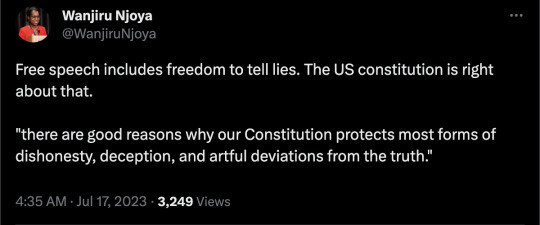
Even with our current climate of fake news, misinformation, disinformation, and election lies, we shouldn’t use government power to try enforcing the truth.
By: Angel Eduardo
Published: Jun 29, 2023
Lies are a problem.
In fact, one can persuasively argue that lies are the problem.
Few behaviors are as corrosive to our social fabric or as foundational to our societal divisions. Lies severely hobble our ability to communicate effectively, our capacity to understand reality, and our attempts at securing social and moral progress. As a result, it’s understandable to conclude that using government power to prohibit and eliminate lies is justified.
The thing is, that’s a terrible idea.
While some exceptions exist, there are good reasons why our Constitution protects most forms of dishonesty, deception, and artful deviations from the truth. In this explainer I’ll go over these reasons and outline why, for all the difficulty and damage they certainly cause, most lies are and should remain protected speech.
What exactly is a lie, anyway?
Most of us can agree that lies are the opposite of truth, but opinions vary from that point forward.
Must lies require a conscious attempt to deceive? If the speaker believes the falsehood, are they lying regardless? Can statements once thought to be true retroactively become lies once they’re discovered to be false?
Things get weirder when you start factoring in things like fiction, satire, or parody. Are those technically “lies”? What if something is mostly true, or mostly false? At what point does a statement cross the threshold into being an official lie?
Hopefully these questions illustrate the difficulty of knowing how and where to draw these lines. Now imagine trying to legislate all this. How can you legally tell the difference between lies and honest mistakes? How much does intention play into your definition, and how can you reasonably gauge it? Perhaps most importantly: How can you ensure that whatever laws you create to stamp out lies don’t get abused or stamp out important truths along with them?
This last question has been central to why discussions about regulating lies with laws have been so difficult, and why they’ve almost always ended by erring on the side of letting false speech stay free.
But what about lies we know are lies? Shouldn’t the government legislate against those? The Supreme Court would wrestle with this very question in a landmark 2012 case, United States v. Alvarez.
The case of stolen valor
During a meeting of the Three Valley Water District Board in Claremont, California in 2007, Xavier Alvarez stepped up to introduce himself. “I’m a retired marine of 25 years,” he said. “Back in 1987, I was awarded the Congressional Medal of Honor.”
These were lies, and Alvarez was in the habit of telling them. In the past he had claimed he played hockey for the Detroit Red Wings and that he had once been married to a Mexican starlet. But by purporting to have received a military medal, Alvarez had taken his dishonesty into new and more serious territory: He had violated the Stolen Valor Act of 2005, which criminalized lying about having or receiving a military honor.
Alvarez was indicted and pleaded guilty to the charge, but appealed on the basis that the law itself was an unconstitutional, content-based restriction of his right to free speech. In other words, the statute restricted speech specifically based on what it is saying, in violation of the First Amendment.
The Supreme Court agreed. “Absent from those few categories where the law allows content-based regulation of speech,” Justice Anthony Kennedy wrote for the majority, “is any general exception to the First Amendment for false statements.” Moreover, Justice Kennedy noted that “some false statements are inevitable if there is to be an open and vigorous expression of views in public and private conversation, expression the First Amendment seeks to guarantee.”
The Court’s analysis recognized two critical points: First, that bans on specific lies are content-based restrictions on speech. Second, that in order to preserve the freedom of expression the First Amendment defends, lies must be protected the same way as any other speech.
Lies and the First Amendment
The short answer to why lies are constitutionally protected is that, outside of a few narrow and formally recognized categories of unprotected speech, the First Amendment is neutral regarding the content of the speech it defends.
This principle was expressed beautifully by Justice Thurgood Marshall in the 1972 Supreme Court case Police Department of Chicago v. Mosley, which questioned the constitutionality of a city ordinance banning non-union picketing outside of a school building. In the majority opinion, Marshall wrote, “the First Amendment means that government has no power to restrict expression because of its message, its ideas, its subject matter, or its content.”
This means that the First Amendment almost universally prohibits content-based regulation of speech. Because they target the substance of speech and are easily used to suppress disfavored ideas, content-based laws or regulations are presumed unconstitutional, and the government must meet a very heavy burden to justify them.
That burden is strict scrutiny — the highest standard in First Amendment law, which requires the government to prove the regulation “furthers a compelling interest and is narrowly tailored to achieve that interest,” as outlined in Reed v. Town of Gilbert, Arizona, et al. Interests are “compelling,” the First Amendment Encyclopedia explains, when they are regarding “regulation vital to the protection of public health and safety, including the regulation of violent crime, the requirements of national security and military necessity, and respect for fundamental rights.”
The key here is that any regulations must not only advance a “compelling” interest, but must also not restrict our ability to speak freely (and dishonestly) beyond what is necessary to further that interest.
As noted above, not all expression is protected by the First Amendment: The Supreme Court has identified “historic and traditional” limitations on a few “well-defined and narrowly limited classes of speech.” These include incitement (Brandenburg v. Ohio), true threats (Virginia v. Black), and obscenity (Miller v. California).
In cases such as the United States v. Robert J. Stevens, however, the Court emphatically rejected as “startling and dangerous” the idea of a “free-floating test for First Amendment coverage” that requires speech to survive an ad hoc balancing of its costs and benefits. Rather, the “First Amendment itself reflects a judgment by the American people that the benefits of its restrictions on the Government outweigh the costs.”
Lies the First Amendment doesn’t protect — and why
When it comes to lies or dishonesty in particular, there are a few forms of it that fall under constitutionally unprotected speech, such as fraud, perjury, and defamation. Even in these cases, though, it’s not so much the lies themselves being acted against, but rather their specific and measurable consequences.
With respect to perjury, for example, false testimony in a criminal trial can lead to a wrongful conviction, affecting the life and liberty of an innocent defendant. Likewise, fraud in the form of false advertising, or other deliberate misrepresentations made for economic or personal gain, can be criminalized due to the clear material costs imposed upon those who fall prey to it.
Defamation, defined as “a false statement that harms the reputation of another,” is perhaps the most well-known of unprotected lies. It’s also very easy to understand the reasoning for it. A lot rides on reputations, and having ours smeared or destroyed can lead to real harm.
However, “harm” can also be incredibly subjective, and defamation can easily be used as a cudgel rather than a legitimate defense of one’s own honor. That’s why judges tread very carefully in defamation cases, and it’s why defamatory statements must meet a specific set of criteria to hold up in court.
As Ronald K.L. Collins, David L. Hudson Jr., and FIRE Legal Director Will Creeley outline in “First Things First: A Modern Coursebook on Free Speech Fundamentals”:
A defamation plaintiff must establish all of the following six elements:
1. Identification: The publication was “of and concerning” the plaintiff.
2. Publication: The defamatory statements were disseminated to a third party.
3. Defamatory meaning: The statements in question were defamatory.
4. Falsity: The statements must be false. Truth is an absolute defense to a defamation claim. Generally, the plaintiff bears the burden of proof of establishing falsity.
5. Statement of fact: The statements in question must be objectively verifiable as false statements of fact. This means the statements were presented as true facts, but are demonstrably false.
6. Damage: The false and defamatory statements must cause actual injury or special damages.
Proving defamation can be really tough, and it gets even tougher if you’re a public figure, like a celebrity or a politician. As we covered in our explainer on the New York Times Co. v. Sullivan Supreme Court case, the limits on defamation law are meant to prevent the chilling effect caused by the use of legal action to silence criticism, satire, parody, or dissent. The bar is very high because courts are rightly afraid that general restrictions on speech, however false or unsavory, will violate not just the First Amendment but the principles of free expression that undergird it.
Other forms of unprotected lies include making false statements to government officials concerning official matters, falsely speaking on behalf of the government, and impersonating a government officer. But as with perjury, fraud, and defamation, the lies themselves aren’t the only reason for that being unprotected speech. All of these infractions focus on falsehoods that prevent or disrupt official government action — especially if it would end up infringing upon the rights of others.
Like any deviation from the presumption that speech is protected, these exceptions to the rule are limited, narrowly defined, and place the burden on the government to justify. First Amendment law recognizes that any attempt to suppress freedom of speech, no matter how well-intentioned, is a perilous endeavor. Carelessly allowing the government to regulate what can and cannot be said will cost us more than we bargained for. That is why each category of unprotected speech has been approached with a careful eye toward preserving free expression and avoiding government overreach — and the bar is set high for good reason.
Why lies should remain protected speech
The First Amendment generally protects speech from government punishment or censorship even if that speech is dishonest or false. But is that really the right thing to do? Given our current climate of fake news, misinformation, disinformation, and election lies, shouldn’t we use government power to set the record straight and establish the truth?
Not unless you think you or someone else can square all the lingering concerns about the risk of overbroad, overextended, or overapplied laws. As we covered in our explainer on misinformation, disinformation, and malinformation, allowing the government to define what constitutes these forms of speech is basically begging for it to abuse its power.
Just imagine the authority to determine and regulate lies in the hands of your worst enemies. Do you trust them to use it honorably? Why should they, then, trust you? The problem also goes beyond intentions. Even the most honest and well-meaning political actors can unwittingly succumb to bias, and the incentives to suppress inconvenient truths or ignore expedient lies are far too great to dismiss.
And as with most arguments relating to the restriction or regulation of free expression, the questions remain: Who decides? How do they decide? And who watches the watchmen?
In the majority opinion explaining why the Stolen Valor Act infringes upon free speech rights, Justice Kennedy stated the following:
The remedy for speech that is false is speech that is true. This is the ordinary course in a free society. The response to the unreasoned is the rational; to the uninformed, the enlightened; to the straight-out lie, the simple truth… The First Amendment itself ensures the right to respond to speech we do not like, and for good reason. Freedom of speech and thought flows not from the beneficence of the state but from the inalienable rights of the person. And suppression of speech by the government can make exposure of falsity more difficult, not less so. Society has the right and civic duty to engage in open, dynamic, rational discourse. These ends are not well served when the government seeks to orchestrate public discussion through content-based mandates.
While striking down the law, Justice Kennedy also reaffirmed the principles of free expression and open discourse that the First Amendment has always protected and represented. Yes, lies may be divisive, dangerous, and destructive to our relationships, our social order, and our polity — but the truth can’t be enforced through the authority of the state. It is the government’s job to keep our speech free. It’s our job to find and uphold the truth through the use of that speech. That’s a lot of work and responsibility, and it can often be messy, but the alternatives have far greater and graver costs.
Some argue that times have changed — that modern technology has fundamentally shifted our discourse to the point where drastic, even draconian interventions on lies and misinformation are required. But the critical questions of who to grant that power to and how to check it linger on, and it is unlikely that they can ever be truly or satisfactorily answered.
In the meantime, lies are the price we pay for the freedom to discover the truth for ourselves.
==
Among the best arguments against controlling perceived "misinformation" and lies are:
The need to be able to tell, with certainty, the difference between a lie and a mistake. Some percentage of people who believe in Flat Earth are undoubtedly lying, but many genuinely believe what they're saying. You can't punish people for simply being wrong.
Processes like science are never done. They must always consider the possibility: what if you're wrong? Or even just, what if you missed something, or what if you don't have the whole picture? The Church knew the "truth" and punished Galileo for "misinformation."
Perhaps more self-interested compellingly, never establish a policy or precedent that your enemies can use against you when they're in power. (And if your immediate instinct is, well, we'll just make sure they don't/can't get into power, you might want to consider the position in history of those who said the same thing.)
#Angel Eduardo#free speech#freedom of speech#First Amendment#freedom of expression#misinformation#protected speech#censorship#religion is a mental illness
17 notes
·
View notes
Text
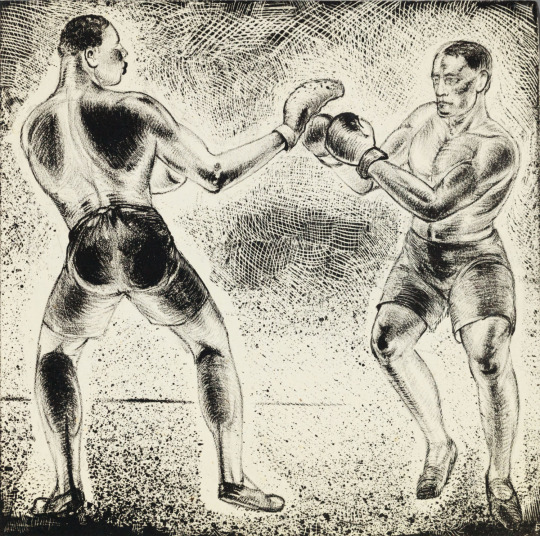
Bulgakov Boris Petrovich (1893-1964). Boxers. 1920s.
Paper, etching. Bottom right: "B."
He was born in the family of a coastal navigation navigator P. Bulgakov. In 1902 he was enrolled in the Third Kiev Gymnasium, after which in 1913 he entered the Kiev Imperial University of St. Vladimir; he studied first at the Faculty of Medicine, then at the Faculty of History and Philology. In August 1916, he went to the front as a freelancer. For his participation in hostilities, he received personal nobility, was awarded two St. George's Crosses.
In 1921-1926 he studied at the Second State Free Art Workshops - VKhUTEMAS (in the same course with A. Deyneka and A. Goncharov) at D. N. Kardovsky, N. N. Kupreyanova, V. A. Favorsky.
He lived in Moscow. He worked as a machine tool, engaged in book illustration, ex-libris. Collaborated with the publishing houses Detgiz, Young Guard, Uchpedgiz. I made illustrations for the book "Don't listen to me. Folk Tale" (1927) and others.
Since 1925 - participant of exhibitions. In 1926-1932 - member of the Society of Easel, participant of the 2nd, 3rd and 4th exhibitions of OST (1926, 1927, 1928). He exhibited his works at the exhibition "Russian Book Sign in Engraving" in Leningrad (1925), the exhibition of engraving and drawing of masters of Armenia, Belarus, Georgia, Russia and Ukraine in Kiev (1928) and others. Participant of a number of international exhibitions and exhibitions of Soviet art abroad, including international exhibitions of book art in Leipzig, Nuremberg (1927), Cologne (1928), the exhibition of Russian art in Winterthur (1929), the World Exhibition in Chicago (1933).
In the mid-1930s, he was accused of formalism, after which he focused on his work in the field of book graphics. For many years he held the post of chairman of the Moscow City Committee of Graphic Artists.
Artistic Auctions
8 notes
·
View notes
Text
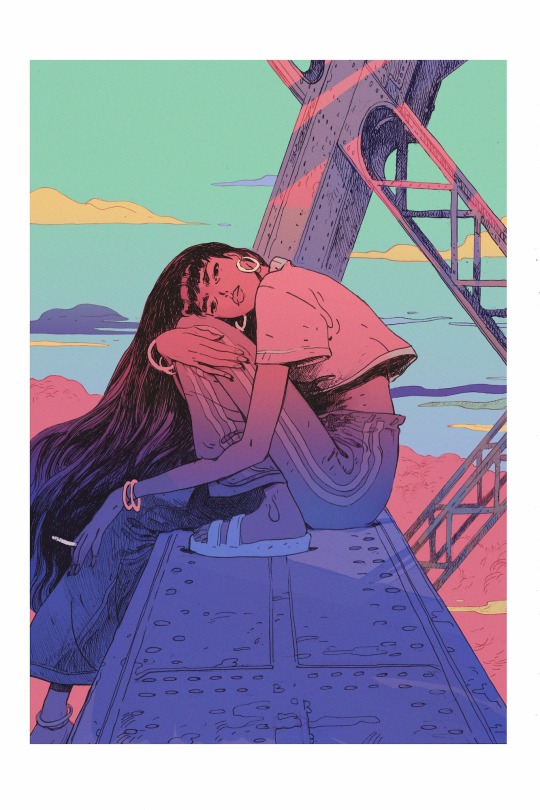
Xlibris for the upcoming Deluxe French Edition by UrbanComics
⭐️ The Many Deaths of Laila Starr
Pen on paper
11'x14'
2021
Colored digitally
Script by Ram V

#1



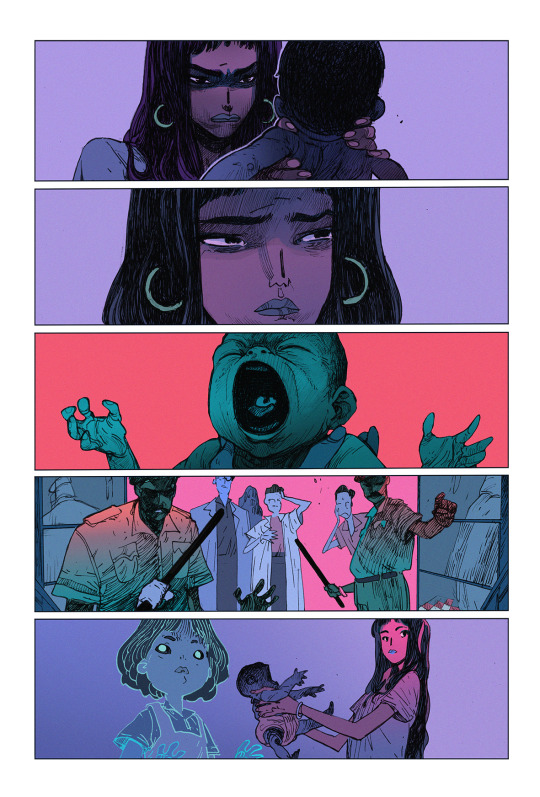


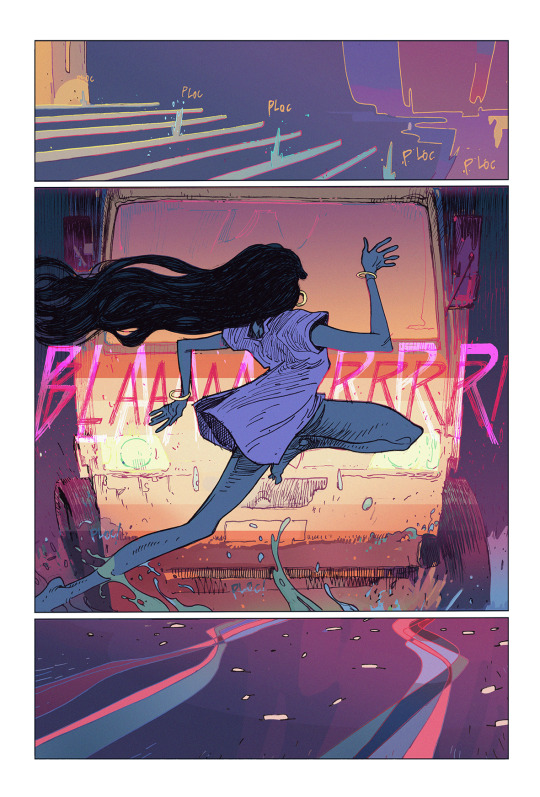

#2



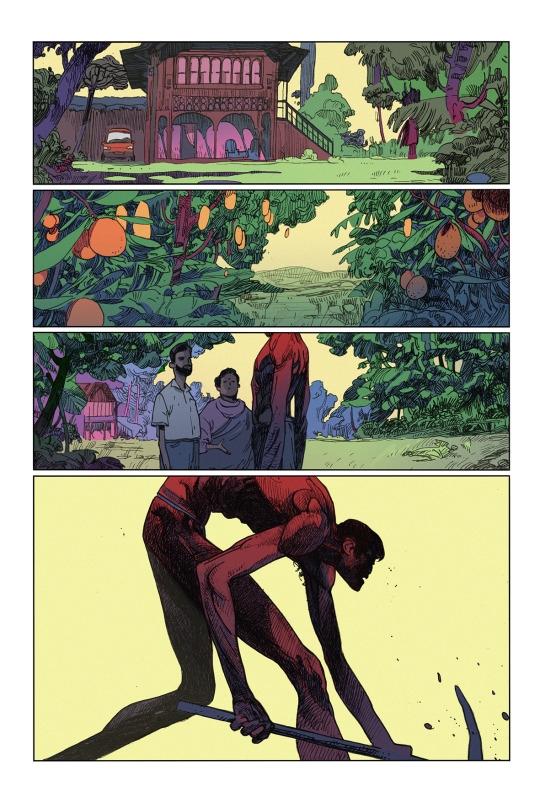
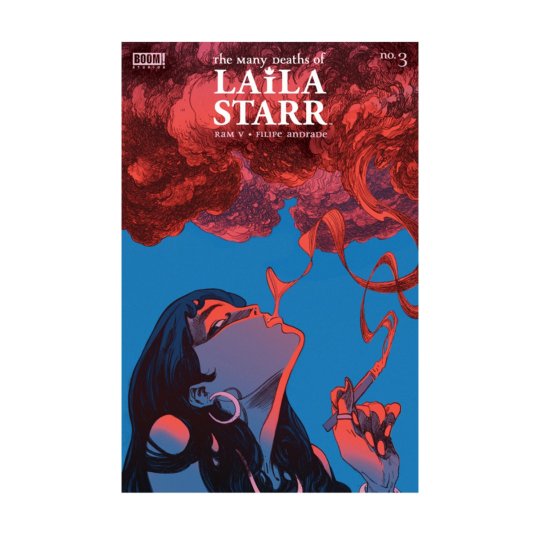
#3
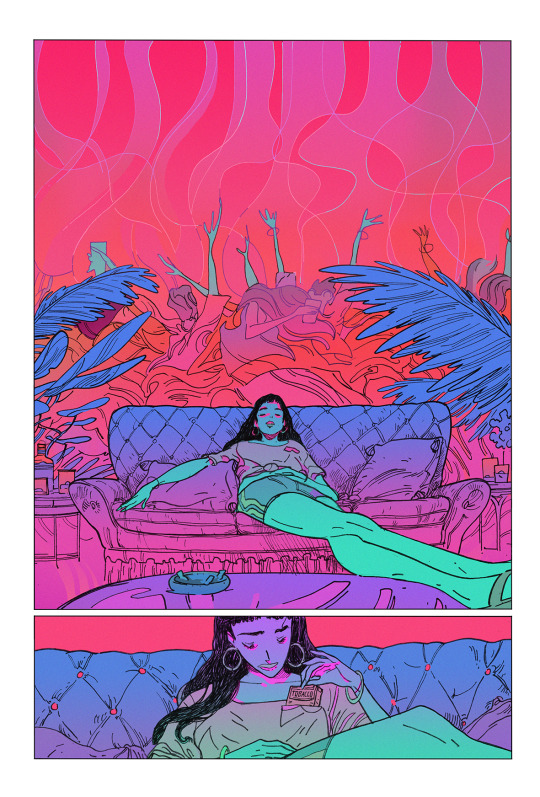


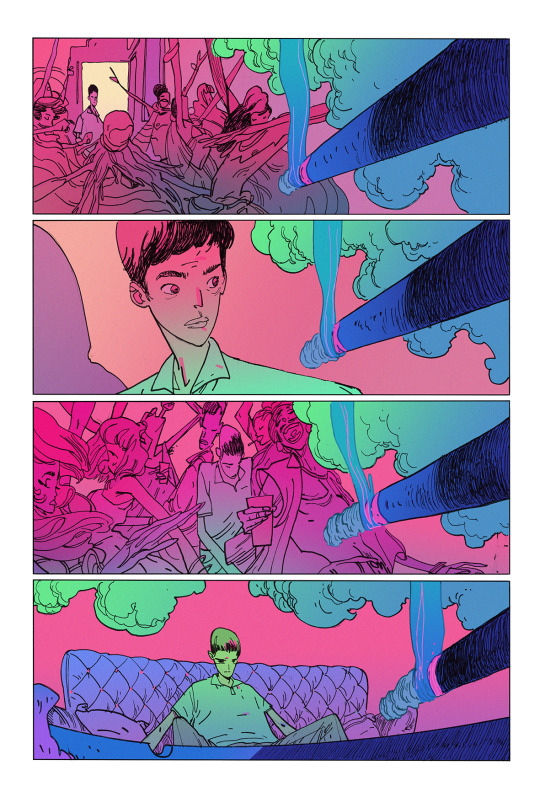

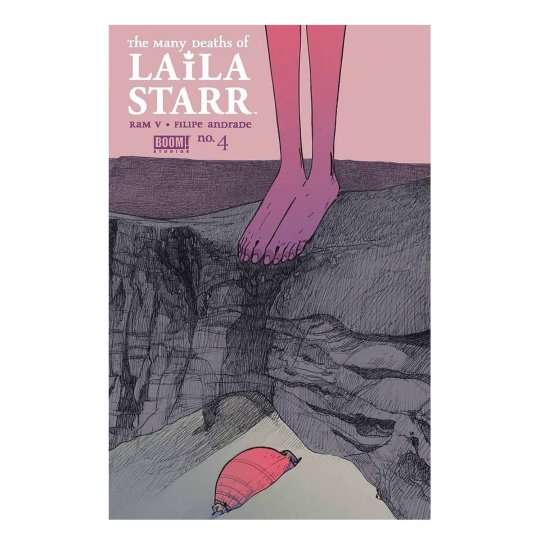
#4

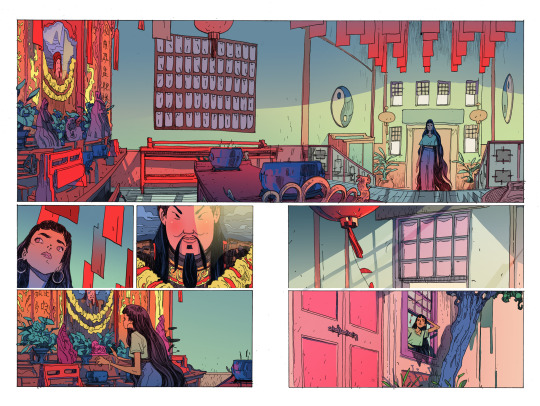
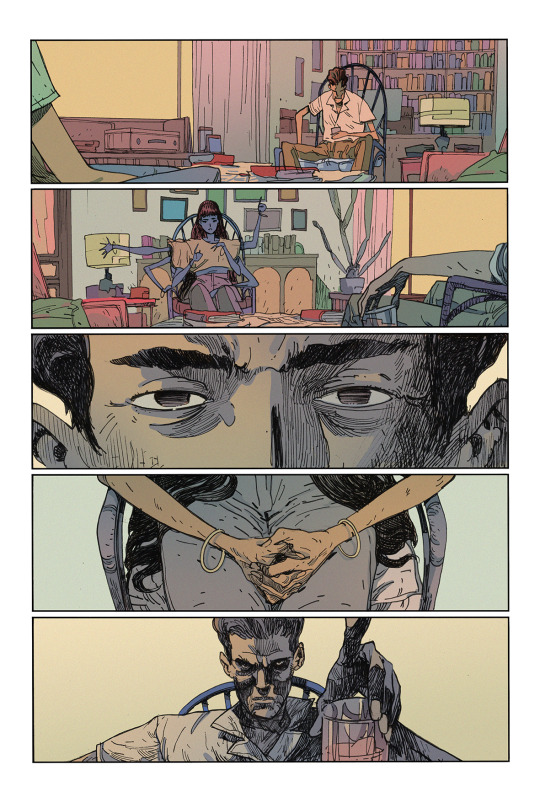

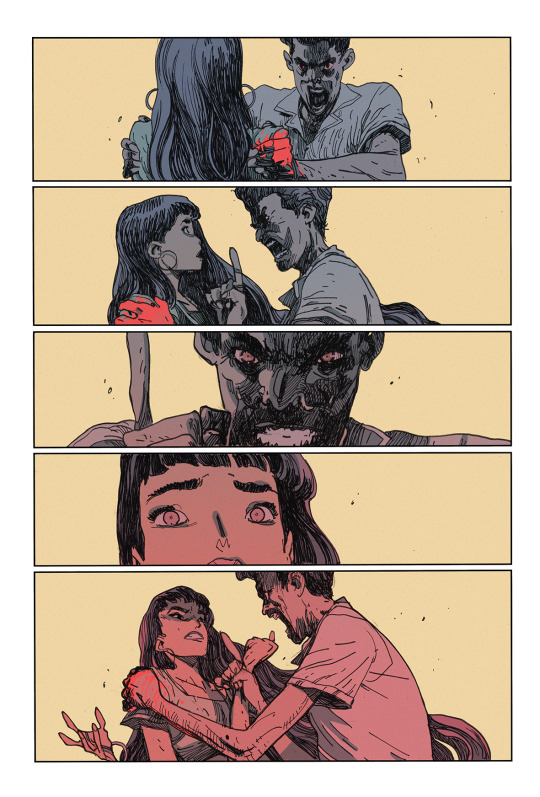

#5


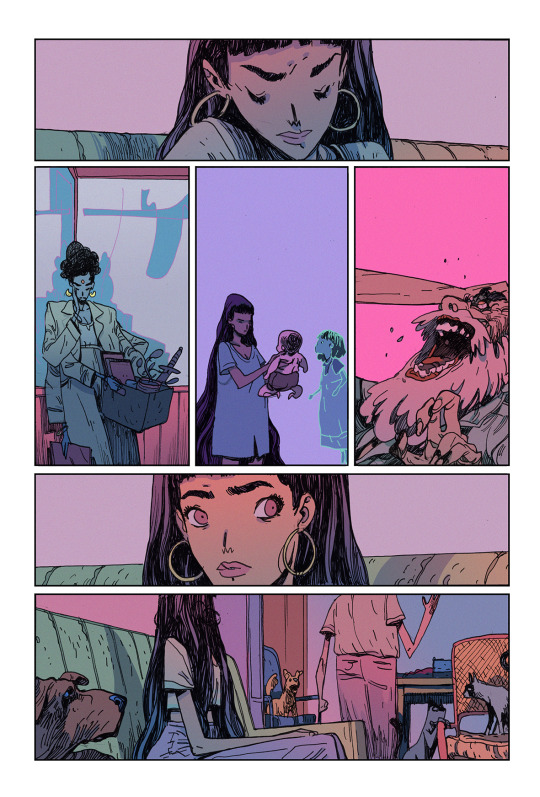
Humanity is on the verge of discovering immortality. As a result, the avatar of Death is cast down to Earth to live a mortal life in Mumbai as twenty-something Laila Starr. Struggling with her newfound mortality, Laila has found a way to be placed in the time and place where the creator of immortality will be born. Will Laila take her chance to stop mankind from permanently altering the cycle of life, or will death really become a thing of the past?
A powerful graphic novel from award-winning writer Ram V (These Savage Shores, Swamp Thing) and lauded illustrator Filipe Andrade (Captain Marvel) that explores the fine line between living and dying through the lens of magical realism.
10 notes
·
View notes
Text
“Aim For The Heart” Creator Spotlight: Jupiter V
We are on the cusp of the FINAL 24 HOURS of the crowdfunding campaign to publish our next anthology, Aim For The Heart: Queer Fanworks Inspired by Alexandre Dumas’s “The Three Musketeers”! Our project is funded, we’re inching toward our first stretch goal, and we’re delighted to introduce you to the last of our creators, Jupiter V.
Jupiter is doing two interior pieces for the book, and is the creator of the 12-page comic! This teaser is for one of their sketches, not for their final piece. 😀

Where Hearts Cross by Jupiter V
About the Artist: Hailing from Kjipuktuk/Halifax, Nova Scotia (that’s in Canada), Jupiter V is an artist, musician, and creative crackerjack with a career spanning over a decade. Cutting their teeth designing award-winning gig posters, they’ve gone on to illustrate for film, graphic fiction, children’s literature, and more. At times, they have been caught painting murals at the circus (?!) and whooping their child mercilessly in Rivals of Aether.
Jupiter is currently toiling away at their next graphic work of fiction, Wizards 99k, as we speak.
Today is your last chance to back this awesome campaign, support independent publishing and queer creators, and get this amazing book and the accompanying exclusive merch! Don’t miss out – pledge to our Kickstarter NOW!
7 notes
·
View notes
Photo

Petra Börner is a Swedish artist and Illustrator based in London since 1994. She was nominated by V&A for 2012 Illustrator Award.
14 notes
·
View notes
Text
Piper Daniel Laidlaw
London Gazette, 18 November, 1915. For most conspicuous bravery prior to an assault on German trenches near Loos and Hill 70 on 25th September 1915. During the worst of the bombardment, when the attack was about to commence, Piper Laidlaw, seeing that his company was somewhat shaken from the effects of gas, with absolute coolness and disregard of danger, mounted the parapet, marched up and down and played the company out of the trench. The effect of his splendid example was immediate, and the company dashed out to the assault. Piper Laidlaw continued playing his pipes till he was wounded.
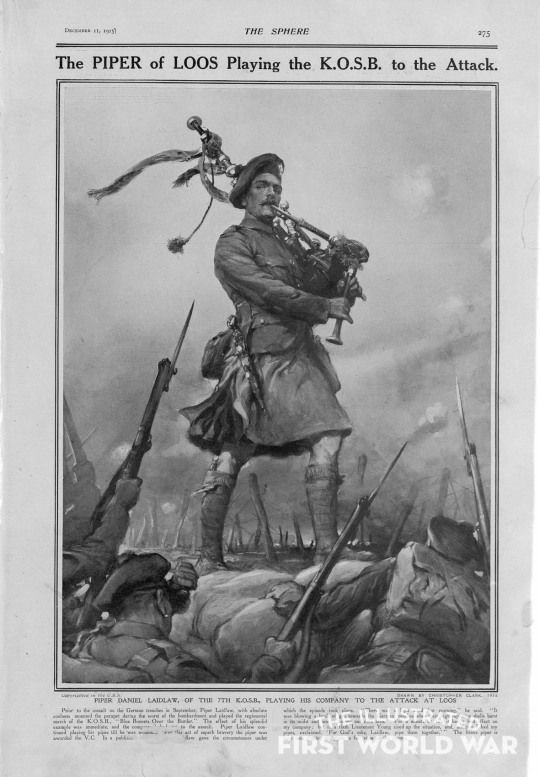
Issue 829. - Vol 63 - Dec 11 1915 - Sphere
Prior to the assault on the German trenches in September, Piper Laidlaw, with absolute coolness, mounted the parapet during the worst of the bombardment and played the regimental march of the K.O.S.B., “Blue Bonnets Over the Border.” The effect of his splendid example was immediate, and the company ... to the assault. Piper Laidlaw continued playing his pipes till he was wounded. For his act of superb bravery the piper was awarded the V. C.
In a publish... gave the circumstances underwhich the episode took place. “There was a light wind that morning. he said. “It was blowing a bank of gas towards the German trenches when their high-explosive shells burst in its midst and sent it among our own men. For a minute or two it had a bad effect on my company; but in a flash Lieutenant Young sized up the situation, and, noticing I had my pipes, exclaimed, ‘For God’s sake, Laidlaw, pipe them together.” The brave piper is here seen playing the pipes in full view of the enemy.
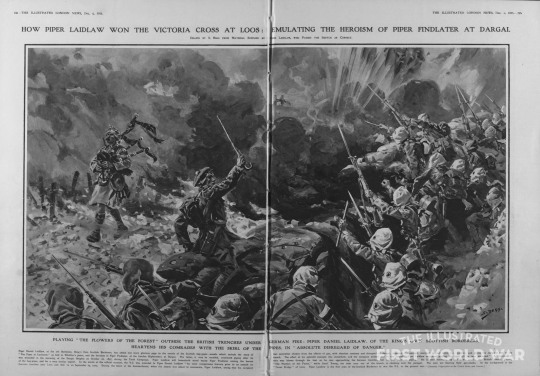
Dec 4 1915 - Illustrated London News
Piper Daniel Laidlaw of the 7th Battalion, King’s Own Scottish Borderers, has added one more glorious page to the annals of the Scottish bag-pipes-annals which include the story of ”The Pipes at Lucknows,” as told in Whittier’s poem, and the heroism of Piper Findlater, of the Gordon Highlanders, at Dargai. The latter, it say be recalled, continued piping after he was wounded in the storming of the Dargai Heights on October 20, 1897, during the Tirah Campaign. Piper Laidlaw will henceforth stand beside Piper Findlater among the heroes of the bag-pipes, and for a very similar exploit. In the words of the official account, the V.C. was awarded to Piper Daniel Laidlaw “for most conspicuous bravery prior to an assault on German trenches near Loos and Hill 70 on September 25, 1915. During the worst of the bombardment, when the attack was about to commence, Piper Laidlaw, seeing that his company was somewhat shaken from the effects of gas, with absolute coolness and disregard of danger, mounted the parapet, marched up and down (i.e., outside), and played his company out of the trench. The effect of his splendid example was immediate, and the company dashed out to the assault. Piper Laidlaw continued playing his pipes till he was wounded.” A fragment of wire was blown through his foot as he was approaching the German trenches, but he still went on piping. He is seen marching up and down outside the British trench, playing “The Flowers of the Forest,” while Lieut. Young, the neat man out of the trench, is climbing over the parapet. The men are wearing their gas-masks. In the background is the ” Tower Bridge ” of Loos. Piper Laidlaw is the first man of the Scottish Borderers to win the V.C. in the present war.
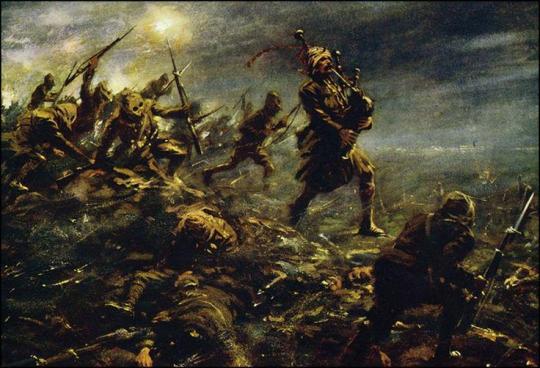
IMAGE number: LLM976461
Piper Daniel Laidlaw marching up and down the parapet of his trench playing his pipes to rally men shaken by the effects of gas, Battle of Loos, 25 September 1915. Illustration for Deeds That Thrill The Empire (Standard Art Book Co, c 1919).
Artist: Bagdatopoulos, William Spencer (1888-1965)
21 notes
·
View notes
Photo

Hey all! So usually there would be a poll for what comic or illustration topics would be focused on for the next month, but I've decided to take May to update my Patreon to bring it up to current standards! Quite a few things are out of date ^v^;;
Also, I'd like to make some updates to awards, though nothing will concretely change until probably around September 2023 to give people time to give input / understand what's coming up o:
There'll still be awards and the like, but definitely more polls / posts asking for opinions so be on the look out!
9 notes
·
View notes
Text
Hold up Hoss, we’re not done here.
We move on from stuff so quickly around here. I am still shook over the lace-up black leather glove that appears to sheathe one of Park Jimin’s hands in that teaser pic. TMI but just thinking of what the rest of that pic might be makes me go nnngh. I breathlessly await the return of leather-clad Kitty Gang Jimin v.2.
This edit.... none of us have any shame do we?

And Jungkook has the audacity to say he is embarrassed because perhaps his concept photos were a little way out there in left field....Koo, are you just too used to seeing your bae in black leather straps or something? Let us be the judge of that okay?

What else happened within the last few days that we just zoomed right through and kept going?

Jimin working with some interesting producers [look at his lil feets in ballet position]. He is hardcore serious about this album of his. He never leaves anything on the table when he decides to go all in. Remember blindfolded Jimin live-performing choreography involving multiple spins and never faltering?
What could Jimin’s album be titled? Wet to Come? Thot Thot? Inner Demon?Badder Decisions? Up and Down (But Mostly Down)? Blue & Pink? Love Glaze? ha ha just kidding. Sorta. I think I’m still hung up on the thought of black leather straps Jimin. Told you I was shook.
Artworks of Jimin by illustrator Lee.K hanging in the Louvre... and the lines of people waiting to walk by it and snap a pic of themselves with it.

Jimin on Weverse laughing his ass off at Armys’ threats to shave their heads if he doesn’t comment on their posts. Good job Armys you made him laugh! See Tae???? We are funny!!!!
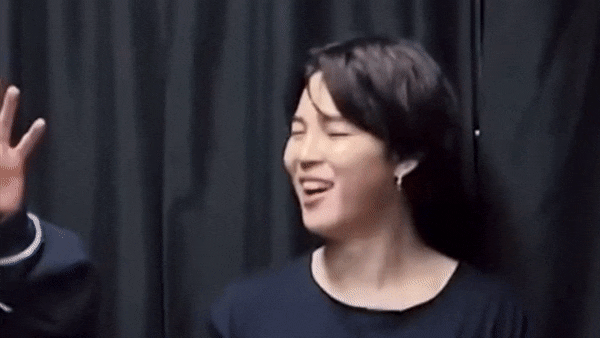
Pole dancing Jimin... and yesterday/today Jimin making it known AGAIN that he was with his big double bunny Kookie on his birthday.
You know, for someone who has been low key since returning from Las Vegas...he has been everywhere doing everything and getting in everyone’s business and we keep saying we never see him. OTHER PEOPLE ARE SEEING HIM! JUST NOT US!
Other things that happened this past week: unaffordable-for-the-masses-collectors-edition PROOF sells out, VMAs: wins the award as fakest award show ever, #ArmysGoingToJailParty (I don’t even know why that trended but it was funny as hell), 2-yr old Dynamite hitting #1 on iTunes Top Songs again (the Queen).
Never a dull moment around here...at least not many.
#i thought thot thot was pretty clever myself#i realize i sleep less as a BTS fan#park jimin#jimin#jikook#its jungkooks birthday#armysgoingtojailparty#jimin in the louvre
27 notes
·
View notes
Text
Mela Lee is an American voice actress She is best known as the voice of Jade in Mortal Kombat 11.
Lizzie Aguinaldo (Pop Star Philippines) Singer
Renato Clarete Tranquilino (The Author) is a Filipino-AustralianIT Professional who has an interest in sci-fi fantasy films and writing stories
Darth Vader Vs BDMS
Dr. Michele Alignay (registered psychologist, speaker, and an award-winning author)
Tomia (Korea Cosplayer)
GN Santiago (Comic Creator, Publisher at PartyZone)
Bambi Eloriaga-Amago (Writer) and Sir Roland Amago (Illustrator) Best Known Doobiedoo Asks
Kevin Eric Raymundo Best Known Tarantadong Kalbo
Angelika Dela Peña (Artist)
Sentinels From Marvel Created By Sir Mic Mac Toys (Toy Maker)
Ivyree Rosario of Little Things PH (Artist and Book Author)
Josue Mapagdalita (Best Known Mula sa Kilometer Zero) Book Author
Andre Paras (Pro Basketball Player and Actor)
JB Tapia (Best Known Trese Present: Verdugo) Comic Artist and Writer
Michael Andres Subido (Sintra Board white Using To Make Toys and Mic Mac Toys Expert)
Joe Maquirang (Famous Cosplayer)
Baninay Bautista [Pinoy Big Brother Lucky 7]
Bont Bryan Oropel (Youtuber and Vlogger) Master Hokage
Princess Malonzo (Voice Actress From Ella Arcangel, Community Manager and Publishing Editor
MariaSong Cosplayer
Mervin Malonzo (The Author of Tabi Po: Isyu 1) ★ National Book Awardee for Graphic Literature (Filipino) ★
DJ S.J. Wolf (The Author of Under the City Lights)
Kylie V Milanes (The Author of Echo) Publisher HS Grafik Print
Bola.Tv Free Tshirt Thank you po
Marlou Aquino (Pro Basketball Player From PBA and MPBL)
Diane Sabandeja (Internet personality)
Sir Wick, Sir Tim and Sir Clin (Talent People)
Chris Timola (Airbrush Artist)
D. Borja (The popular Filipino web comics Best Known HungHang Flashbacks)
Jio Jalalon Pro Basketball Player From MAGNOLIA CHICKEN TIMPLADOS HOTSHOTS
Frany (Comic Artist From Mask of Haliya Issue 3, Marvel and Dc Comics)
Tamagotchi Collection
Al Francis Tamsi Former FEU Basketball Champ 2015
Gizmo From Superbook
Autograph Sign with Drawing By Sir Kajo Baldisimo The Creator Trese Netflix
Tobera Member Tsubasa, Taka, Eto, Neon, Daiki, Arata
1 note
·
View note
Text
What’s up I’m Corn/Leon/Bri
I have many names, take ur pick.
He/They/It, white Ojibwe,
I currently write & Illustrate Blackbird Hunting, but my other major comic project was House & Home. I’m also working on a project called The Dogwood Trinity that I’ll talk about occasionally, but won’t be publishing for a long while. To check out my comics go here :3c
I’m also a writer, my work has been featured in anthologies like THE SHIRLEY JACKSON AWARD NOMINATED ANTHOLOGY (im v excited abt it) Your Body is Not Your Body from Tenebrous Press, Bloodless from Sliced Up Press, and MINE from Creature Publishing.
like my ocs? Read all abt em on my toyhouse
I’m @ear_a_corn on twitter & Ig,
Website: https://www.bricrozierart.com
Artfight: https://artfight.net/~Earacorn
uh yeah, that’s abt it, feel free to ask me shit.
If u draw Red I would die, she is my baby and I love her.
4 notes
·
View notes
Text
Identity V Nymph Award Costume Release
Naiad (Grace) and Wu Chang Poster Preview

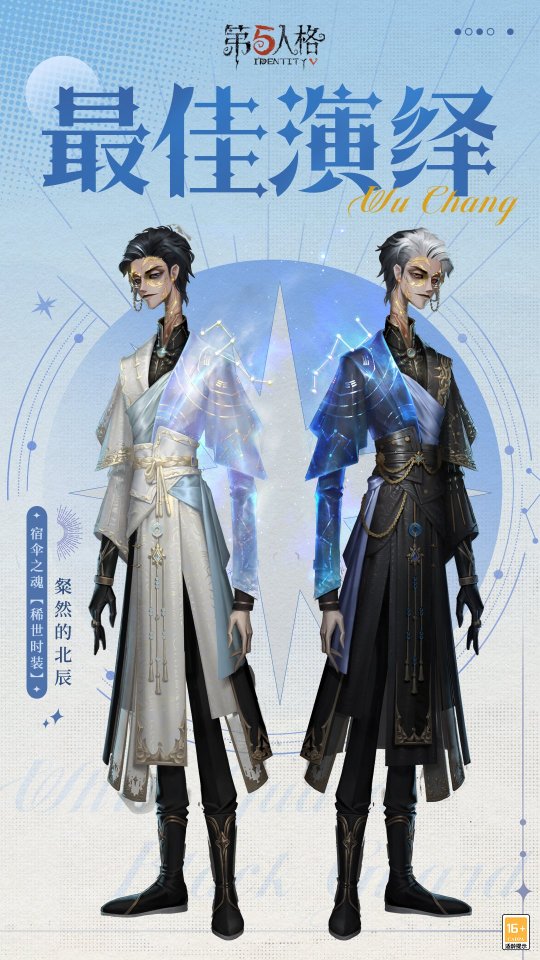
In addition to the costume release, Naiad and Wu Chang will get character song, Live2D illustration, and individual merchandises
7 notes
·
View notes
Text
Generally I 'm not a huge fan of the Get Famous pack let alone Del Sol Valley, but I thought to give it a try and I got inspired and did a little something for Judith Ward
For context: she is about to accept an award and starts thinking back at her life and how far she's come not only as an actress but as a celebrity also!
This was one of those times where I get really really inspired and try to illustrate as well as I can what I see in my mind, so I hope it turned out well!! ^v^
(keep in mind I painted all of these on my phone so if it looks sloppy that's why!!!!)
#judith ward#sims#sims 4#the sims 4#ts4#the sims#ts4 judith ward#ts4 judith#sims 4 judith ward#sims 4 judith#sims judith ward#get famous#del sol valley
18 notes
·
View notes